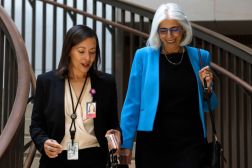From NASA’s private sector competitions to promote the future of commercial space travel to the Department of Veterans Affairs’ invitation for ideas to ease restrictions on nontraditional contractors, the White House released a new document Aug. 21 jointly produced by the Office of Management and Budget and the Office of Science and Technology Policy highlighting an array of pioneering contracting case studies in federal government.
The document, Innovative Contracting Case Studies, chronicles the different ways federal agencies can get more innovation for less money, according to a blog post authored by Tom Kalil, OSTP’s deputy director for innovation and technology, and Lesley Field, OMB’s deputy administrator of federal procurement policy.
“The federal government has long used its buying power as one of the world’s largest customers to accelerate well-known innovations, from the first microchips to the global position system,” the blog post said. “Today, federal agencies continue to leverage innovative procurement practices that spur the private sector to develop advanced technologies to better serve the American people – and to pay only for successful results, not just best efforts.”
The inclusion of the case studies is not intended to establish a policy for how contracting should be done, but rather to be used as a resource, the document said.
Rapid technology prototyping, which looks to pull innovation from small businesses, uses small and cheap acquisitions to allow agencies to test out certain technologies and examine the applicable use at the agency. The success rate for the quick acquisitions turning into potentially transformative technologies, however, is below 30 percent.
“Rapid technology prototyping contracts may be used by the government for the rapid and inexpensive assessment of many cutting-edge, unproven, but potentially transformative technologies,” the document said.
Milestone-based competitions, incentive prizes and challenge-based acquisitions all involve some sort of enticement from businesses to contract with, or provide services to, federal agencies.
These competitions or challenges are designed to encourage innovation through forcing companies big and small to compete with one another for a contract. The document referenced NASA’s Innovative Lunar Demonstration Data (ILDD) as an example of how an agency can use a competition-based structure to spur innovation.
With the ILDD, NASA challenged industry to help develop technology to demonstrate flight system capabilities between the Earth and the moon. Using the challenge, the document said, NASA achieved its goal of collecting data about what private sector companies can develop to help facilitate Earth-to-moon transport.
Currently under the federal acquisition regulation, agencies have directives and regulations in place to help guide the contracting process along. With the passage of the America COMPETES Act in 2007, other pathways to investing in certain areas were established. OMB and OSTP’s document, however, provides a central place to see how contracts have been executed within the FAR and through the America COMPETES Act.
The document’s release comes just a few weeks after the announcement of the U.S. Digital Service team and its accompanying Digital Services Playbook, which established guidelines for how agencies should develop digital services such as websites, apps and platforms for internal and external use.
Although the USDS focuses on digital services across federal agencies, the release of the playbook and the case studies document point toward the White House’s goal to build a 21st century government.
“All of these innovative contracting efforts are aligned with President Obama’s management agenda to deliver a 21st century government that is more effective, efficient and supportive of economic growth, including specific cross-agency initiatives on smarter IT delivery, strategic sourcing and shared services,” Kalil and Field’s blog post said. “We look forward to raising awareness about the many ways that the Federal Government can use the power of the purse to deliver powerful and cost-effective technology solutions for the American people.”






